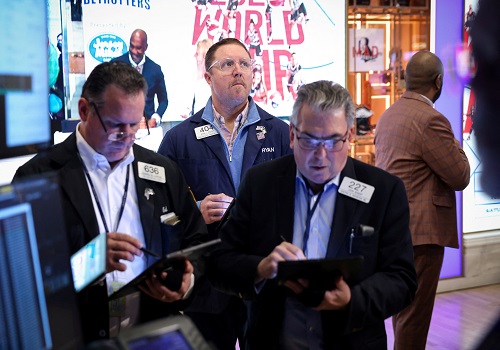Dollar firms ahead of busy data week with US inflation in focus

The dollar was on the front foot on Monday ahead of a packed week filled with key economic releases that will provide further clues on the global interest rate outlook, with a U.S. inflation reading taking centre stage.
The core personal consumption expenditures (PCE) price index - the Federal Reserve's preferred measure of inflation - is due on Thursday, where expectations are for a 0.4% increase on a monthly basis.
Inflation figures in the euro zone, Japan and Australia are also in the data calendar this week, alongside a rate decision from the Reserve Bank of New Zealand (RBNZ) and PMI readings in China.
Ahead of the releases, the greenback edged broadly higher in early Asia trade, pushing the euro down 0.04% to $1.0817, while the New Zealand dollar fell 0.55% to $0.6164.
The kiwi had risen 1.2% last week, helped by broad dollar weakness and the risk of a rate hike from the RBNZ on Wednesday. While most economists expect the central bank to keep rates steady, futures show a roughly 30% chance of a 25-basis-point increase.
"I think the RBNZ will keep the OCR (official cash rate) unchanged and that will likely cause the kiwi to fall if markets unwind pricing for a near-term rate hike," said Carol Kong, a currency strategist at Commonwealth Bank of Australia (CBA).
"But any falls in the kiwi will likely be pretty small because we expect the RBNZ to remain pretty hawkish."
Sterling was flat at $1.2671, while the Australian dollar fell 0.07% to $0.6559.
INFLATION CONUNDRUM
Data on Japan's nationwide consumer prices are due on Tuesday and are forecast to show core inflation slowed to an annual rate of 1.8% in January, the lowest since March 2022.
That would complicate the Bank of Japan's (BOJ) plans to end negative interest rates in coming months, keeping the yen under pressure in the near term.
The Japanese currency was last marginally higher at 150.40 per dollar, having already fallen more than 6% against the greenback this year owing to the stark interest rate differentials between the U.S. and Japan.
"Since the tail end of last year, the market has been focused on the BOJ's March or April policy meetings as likely bringing the BOJ's negative interest rate policy to an end," said Jane Foley, head of FX strategy at Rabobank.
"News that Japan fell into technical recession in H2 2023 will have dampened some of the market's enthusiasm regarding the pace of monetary tightening from the BOJ."
The latest U.S. Commodity Futures Trading Commission data shows short positions on the yen have jumped to roughly $10 billion as of last week, the largest since November.
In contrast, a recent run of higher-than-expected U.S. producer prices and consumer prices have kept the risks to Thursday's core PCE price index data skewed to the upside, which would further push back expectations for a slew of Fed cuts this year.
Markets are currently pricing in just slightly over a 20% chance that the Fed will begin easing rates in May, as compared to a 90% chance a month ago, according to the CME FedWatch tool.
"If anything, the (data) may be stronger than markets currently expect, and that will likely give a modest boost to the dollar," said CBA's Kong.
"But at the same time, any gains in the dollar will likely be pretty modest. I don't think markets will really expect another rate hike from the FOMC."
The dollar index was last 0.04% higher at 104.01.























